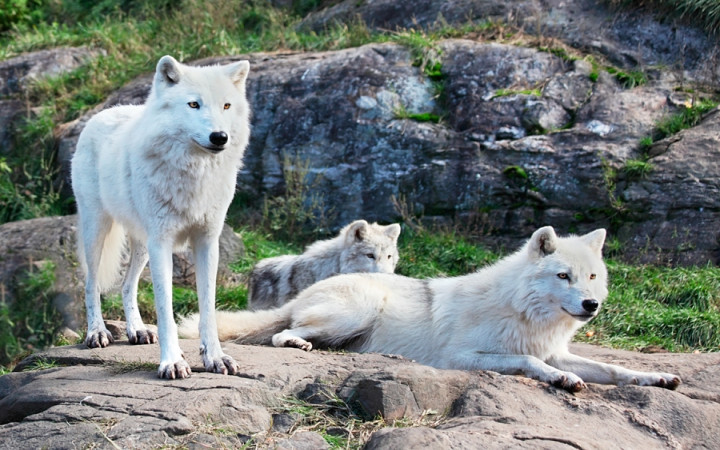Today’s Wonder of the Day was inspired by Tamrum. Tamrum Wonders, “Can wolves be tamed?” Thanks for WONDERing with us, Tamrum!
Have you ever felt like, no matter how hard you try, there’s someone after you? You build a house of straw, and what happens? He blows it down. You build a house of sticks. Guess what? Same result.
If this sounds familiar, you’re not alone. We all feel like the Three Little Pigs now and then. Every time we turn around, there’s the Big Bad Wolf ready to blow things down. Wouldn’t it be great if we could just tame him?
After all, a wolf is just a big dog, right? And dogs are humankind’s best friend. Couldn’t we train the Big Bad Wolf to be our friend? Maybe not . . .
Certain species of animals are easily tamed. Others tend to remain wild all their lives. Today, we’ll take a look at wolves and whether it’s possible to tame them.
Scientifically, wolves are known as Canis lupus. Canis is what gives us our common name for domesticated dogs: canines. So wolves are indeed part of the dog family. In fact, they’re the largest members of the Canis genus.
Throughout history, wolves have had an interesting relationship with humans. They’ve been portrayed as wild beasts with spine-tingling howls. They rarely attack people. Still, most people see them as one of nature’s fiercest predators. Perhaps it’s because they do regularly attack domestic animals, such as pets and livestock.
And yet, between 20,000 and 40,000 years ago, a group of these fierce predators started on the long road to domestication. Over time, they became the pet dogs living in millions of homes around the world today. Despite this, most experts warn against trying to tame wolves. Why? It’s very difficult for the average person to provide for the needs of a true wolf, even if the animal was friendly to humans. Most wolves have a higher quality of life in the wild.
Many types of wolves were once commonplace all around the United States. Today, though, their numbers have dwindled considerably. Due to hunting and loss of habitat, wolves struggle to survive in today’s world.
Because of the scarcity of some species of wolves, some scientists have tried to bolster their numbers by breeding them in captivity in zoos or animal reserves. This has led some to WONDER whether these wild creatures could be tamed like the dogs we’re all familiar with.
It seems logical, right? They’re animals from the same family. Scientists have confirmed through genetic testing that wolves and domestic dogs are quite similar. Despite this, wolves are very difficult to tame.
With such a similar genetic background, scientists have long WONDERed why wolves tend to stay wild while dogs will gladly assume the role of a person’s best friend. New research has given them some hints as to the answer to this mysterious riddle.
Kathryn Lord, an evolutionary biologist at the University of Massachusetts Amherst, believes the difference between wolves and dogs stems from their first sensory experiences and how they’re socialized. Each animal goes through a short period of time called a window.
During this time, they can be introduced to things, such as other animals, sights, smells, and experiences. They will be comfortable with these things for the rest of their lives. After the window closes, however, new things will elicit a fear response.
The key to the difference between wolves and dogs may be when they experience the window. Researchers believe the window may come much earlier for wolves than for dogs. Why does this make a difference?
When wolves and dogs are very young, their sense of smell develops first. Afterward comes their sense of hearing followed by sight. When wolves experience their window, they may only be able to smell. As they try to explore their new world, they probably can’t hear or see much at all.
As their window closes and they develop hearing and sight, those new sounds and sights will elicit fear responses. This may explain why it’s extremely hard to tame wolves.
Dogs, on the other hand, enter their window after their hearing and sight have developed. Thus, they do not fear most of what they hear and see early in life. This leads to their ability to get along with and not fear humans and a variety of other animals.
Do you have a pet dog? If so, you know just how important is for your pup. If not, we hope you’ve met a few friendly dogs in your life. It’s easy to see why they’re called humankind’s best friend!
Standards: NGSS.LS1.A, NGSS.LS1.D, CCRA.L.3, CCRA.L.6, CCRA.R.1, CCRA.R.2, CCRA.R.4, CCRA.R.10, CCRA.SL.1, CCRA.SL.2, CCRA.W.1, CCRA.W.2, CCRA.W.4, CCRA.W.9, CCRA.L.1, CCRA.L.2




